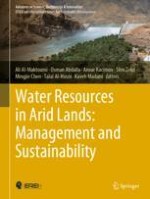This book presents the most recent innovative studies in the field of water resources for arid areas to move towards more sustainable management of the resources. It gathers outstanding contributions presented at the 2nd International Water Conference on Water Resources in Arid Areas (IWC), which was held online (Muscat, Oman) in November 2020. Papers discuss challenges and solutions to alleviate water resource scarcity in arid areas, including water resources management, the introduction of modern irrigation systems, natural groundwater recharge, construction of dams for artificial recharge, use of treated wastewater, and desalination technologies. As such, the book provides a platform for the exchange of recent advances in water resources research, which are essential to improving the critical water situation and to move towards more sustainable management of water resources.
